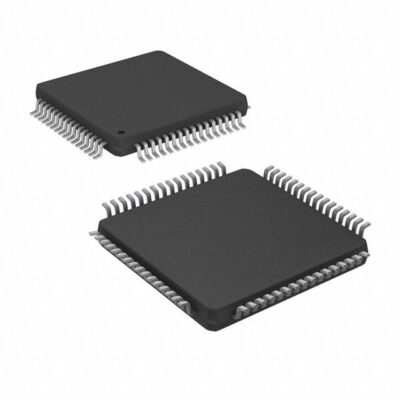ADS1299IPAGR
Part Number: ADS1299IPAGR
Manufacturer: Texas Instruments
Description: IC AFE 8 CHAN 24BIT 64TQFP
Shipped from: Shenzhen/HK Warehouse
Stock Available: Check with us
ICRFQ.com - Electronic Components Distributor in China Since 2003

Part Number: ADS1299IPAGR
Manufacturer: Texas Instruments
Description: IC AFE 8 CHAN 24BIT 64TQFP
Shipped from: Shenzhen/HK Warehouse
Stock Available: Check with us
| Datasheet | |
|---|---|
| Category | Integrated Circuits (ICs) |
| Family | Data Acquisition – Analog Front End (AFE) |
| Manufacturer | Texas Instruments |
| Series | – |
| Packaging | Tape & Reel (TR) |
| Part Status | Active |
| Number of Bits | 24 |
| Number of Channels | 8 |
| Power (Watts) | 42mW |
| Voltage – Supply, Analog | 5V |
| Voltage – Supply, Digital | 1.8 V ~ 3.6 V |
| Package / Case | 64-TQFP |
| Supplier Device Package | 64-TQFP (10×10) |
The ADS1299IPAGR is a cutting-edge analog-to-digital converter (ADC) that is used in electroencephalogram (EEG) studies, fetal electrocardiography (ECG), sleep study monitoring, bispectral index (BIS) monitoring, and evoked audio potential (EAP) research. This extensive guide will provide you a thorough overview of the ADS1299IPAGR, its features, applications, and how to utilize it efficiently in your projects.
The ADS1299IPAGR is a version of the ADS1299 series that provides excellent capabilities for recording analog signals with precision and low noise. Here’s a quick rundown:
Signal quality is critical in medical instruments applications that require precise measurements. The ADS1299IPAGR includes a number of features and tactics to improve signal quality while reducing noise interference. In this section, we will look at how to use the programmable gain amplifier (PGA) to obtain optimal signal quality and efficiently handle input-referred noise.
The ADS1299IPAGR includes a built-in PGA that lets you to choose from a variety of gain settings (1, 2, 4, 6, 8, 12, or 24). Select the gain setting that best corresponds to the amplitude of the input signal. Higher gain settings can help amplify weak signals, but be careful not to enhance noise as well.
Keep an eye out for signal saturation. If the input signal exceeds the dynamic range of the ADC, it might cause clipping and data loss. To avoid saturation, adjust the gain settings and input voltage levels.
When downsampling data, use proper anti-aliasing filters to reduce high-frequency noise and avoid aliasing effects. The filter you use is determined by the required bandwidth of your measurements.
Calibrate the system on a regular basis to adjust for any offsets or drift in the ADC and signal conditioning circuitry. Calibration guarantees that measurements are always accurate.
The ADS1299IPAGR’s built-in PGA is a great tool for tailoring the amplification of your input signals. Here’s how to use the PGA effectively:
Analyze your system’s noise characteristics, including input-referred noise and system noise. This analysis can assist you in identifying sources of noise and developing measures to reduce them.
The noise generated by the ADC and signal conditioning circuitry, which might affect the quality of your measurements, is referred to as input-referred noise. Here are the steps to dealing with input-referred noise:
Implement signal averaging techniques to boost SNR, especially when dealing with low-amplitude sources. Averaging many samples can help to lessen the effects of random noise.
When employing the ADS1299IPAGR in medical instrumentation applications, you may enhance signal quality by carefully selecting gain levels, applying appropriate noise reduction procedures, and knowing the characteristics of input-referred noise. In disciplines such as EEG investigations, ECG monitoring, and other healthcare applications, maintaining excellent signal quality is critical for accurate and trustworthy data collecting.
Engineers and researchers in the realm of medical instruments benefit from the ADS1299IPAGR, which is noted for its precision, low noise, and versatility. It is crucial in critical healthcare applications because it ensures accurate data for diagnosis, research, and monitoring.
Prioritize gain settings, noise reduction, and signal quality while using the ADS1299IPAGR. Its potential is maximized by regular calibration and in-depth comprehension. Whether you’re an engineer, researcher, or healthcare practitioner, this guide will help you navigate the ADS1299IPAGR’s complexities.
To take use of these ADS1299IPAGR capabilities, please contact ICRFQ, China’s leading electronic component wholesaler. Let us embark on this life-changing journey together.
WhatsApp us